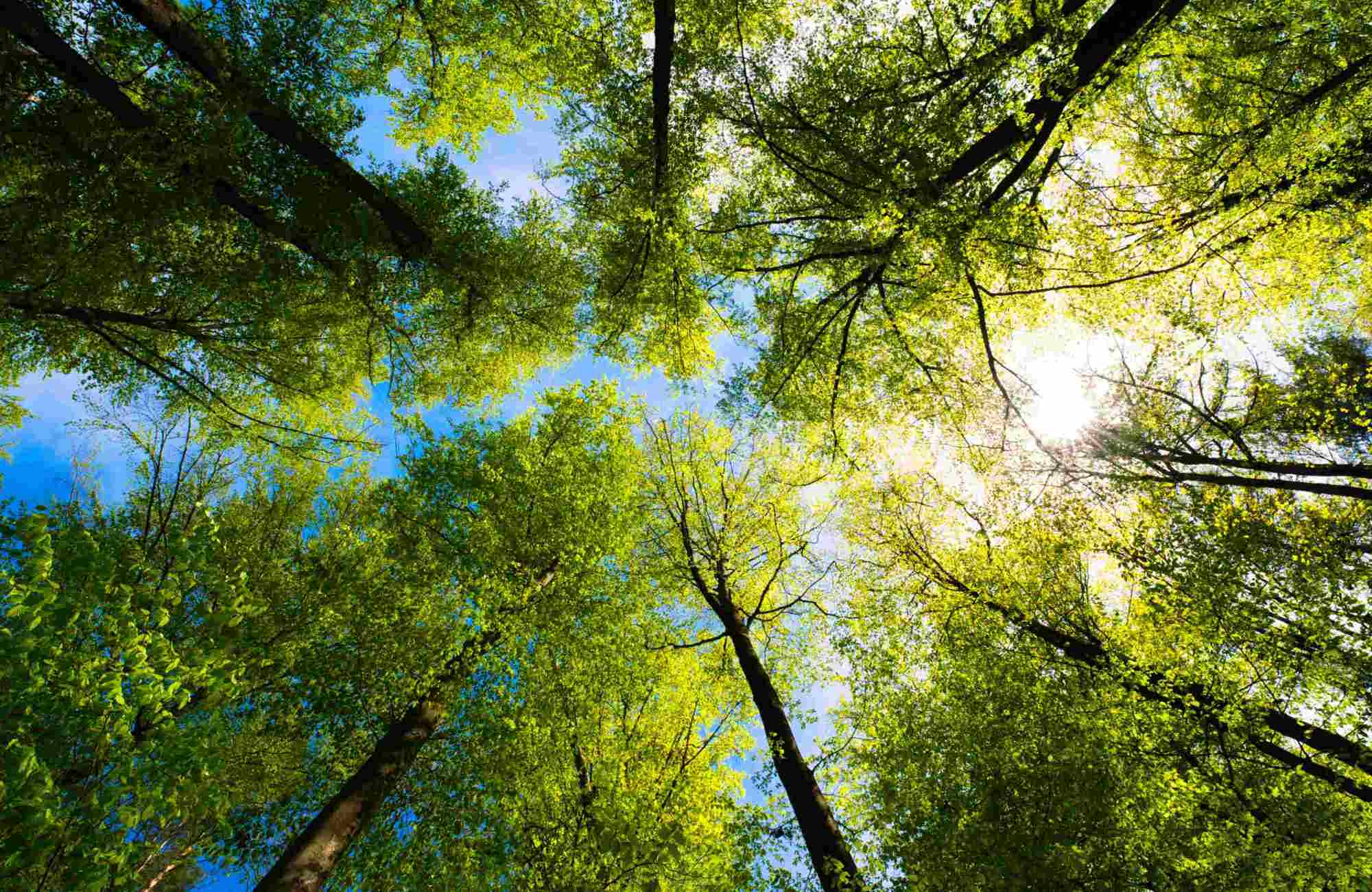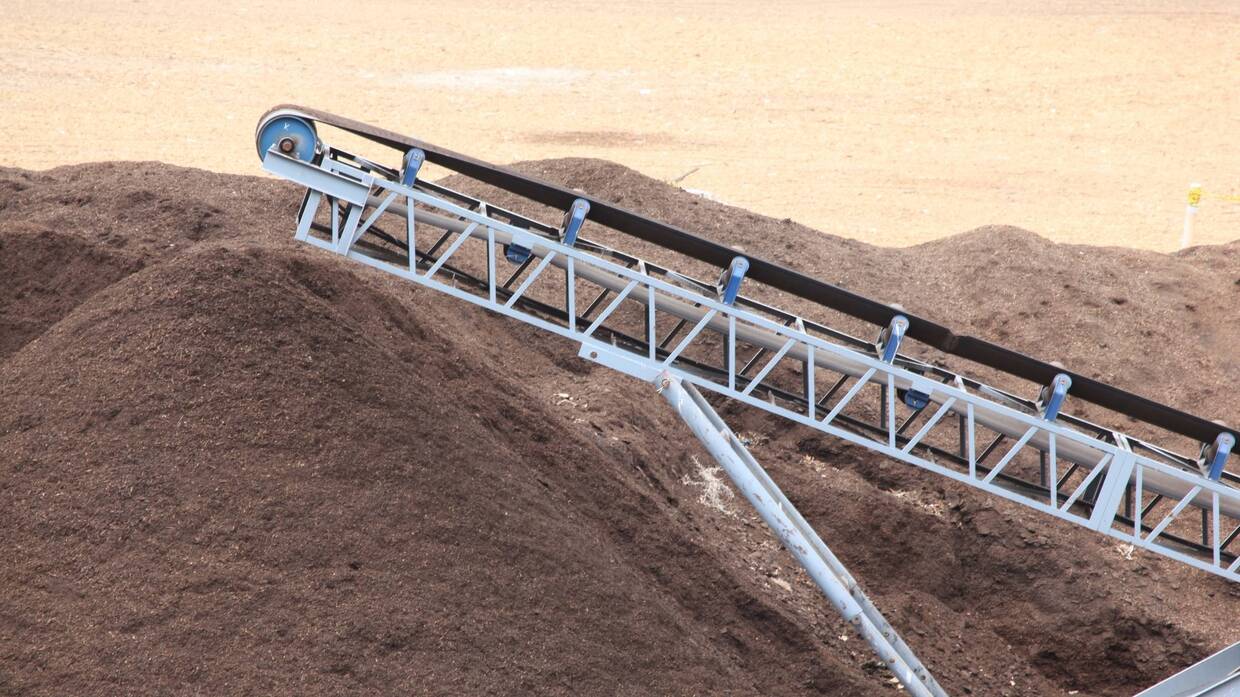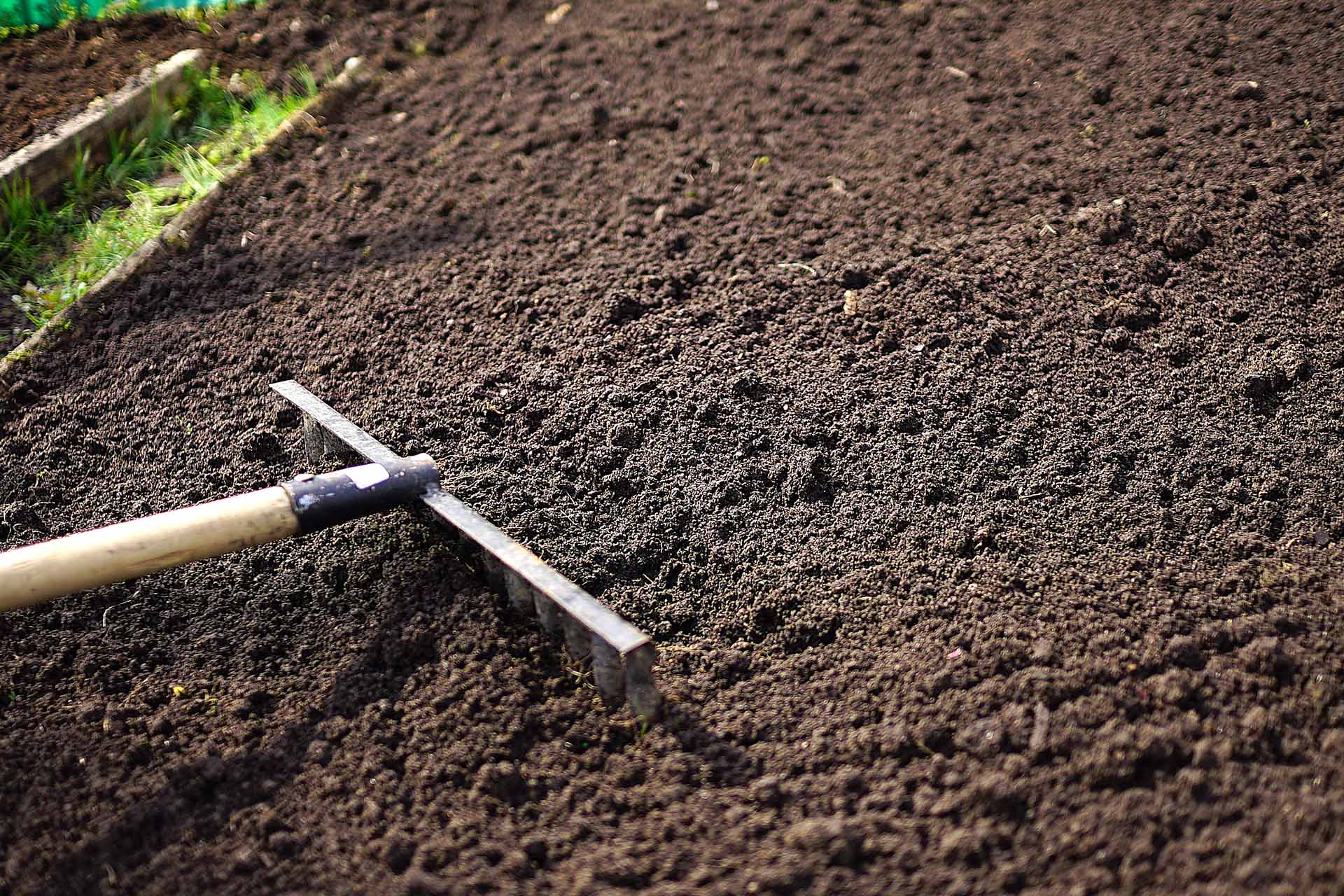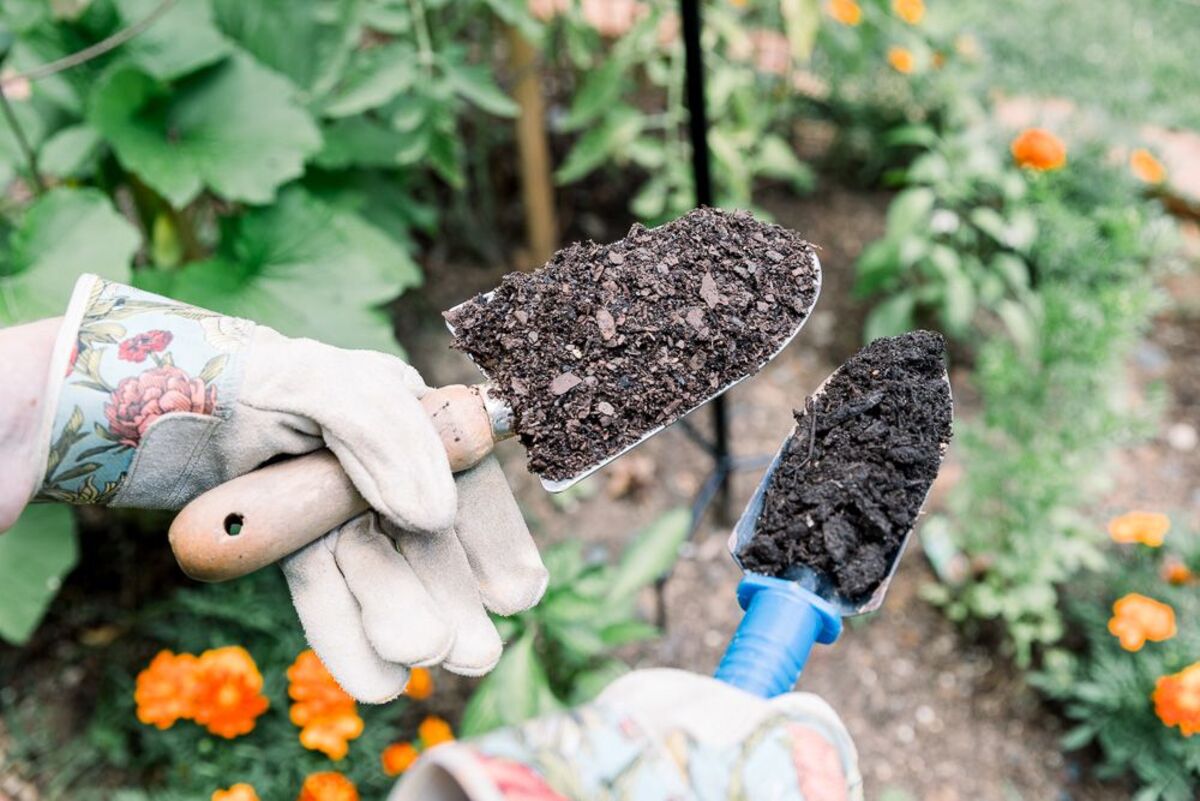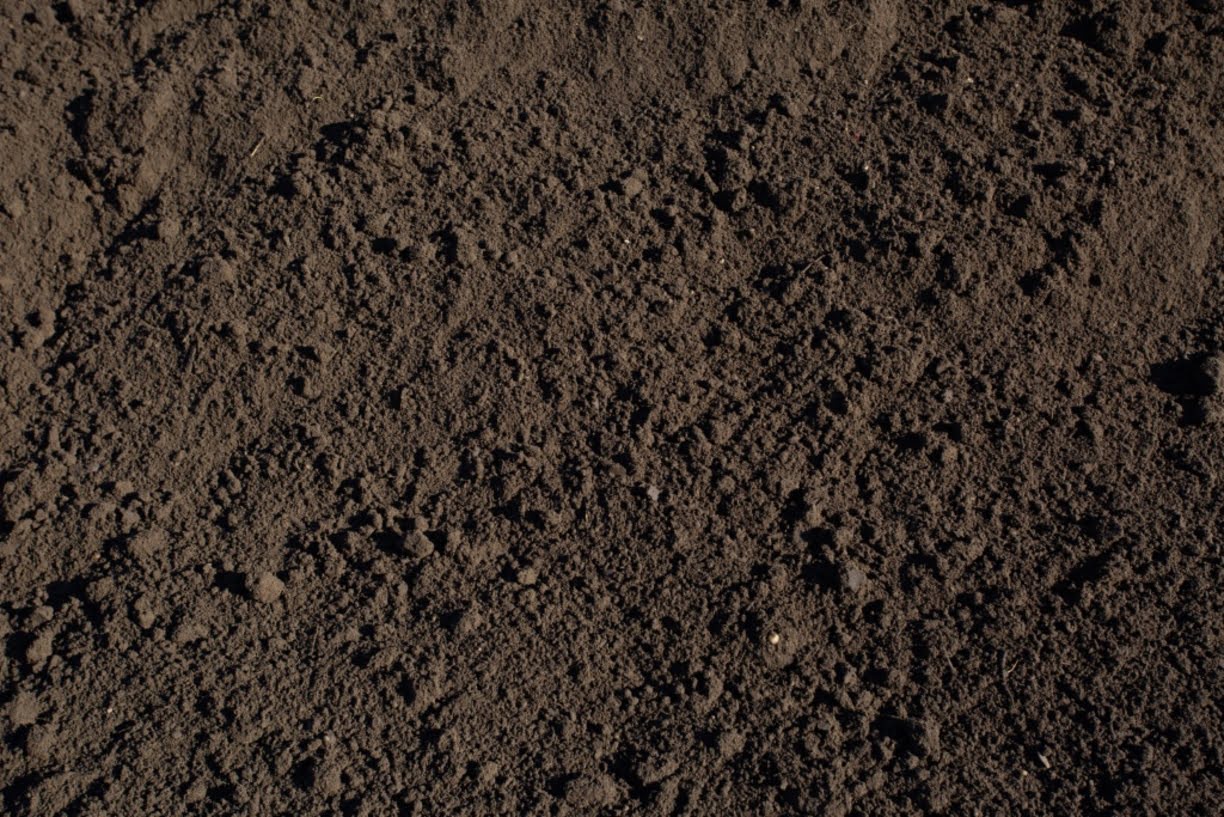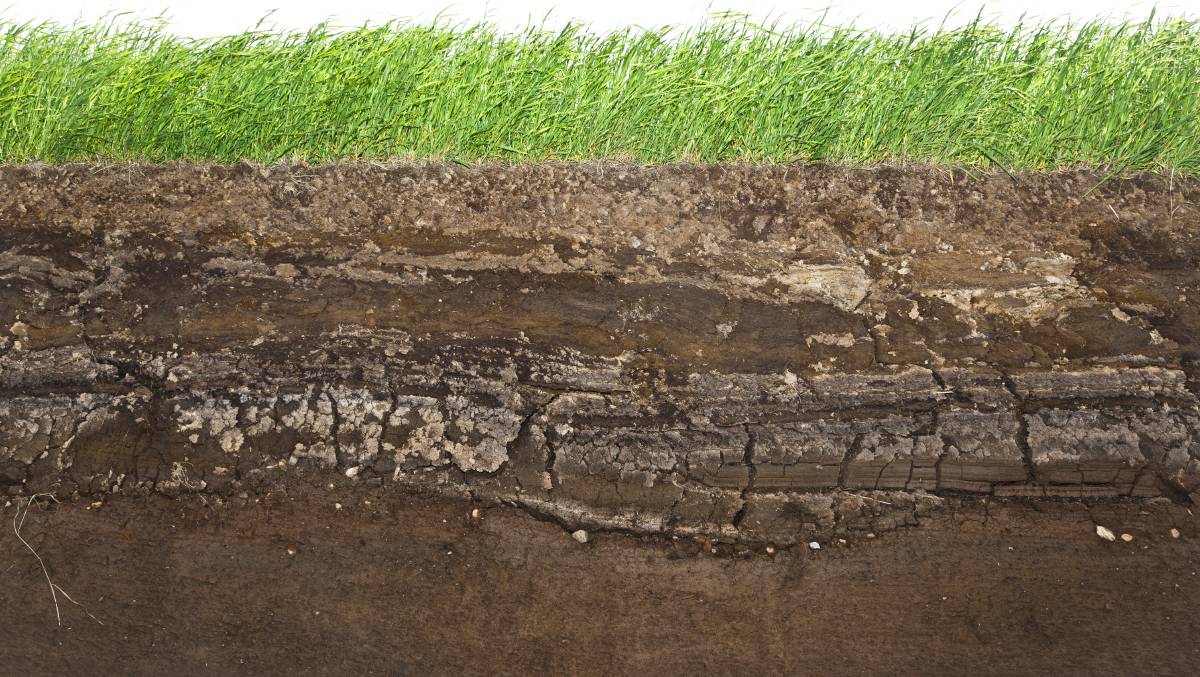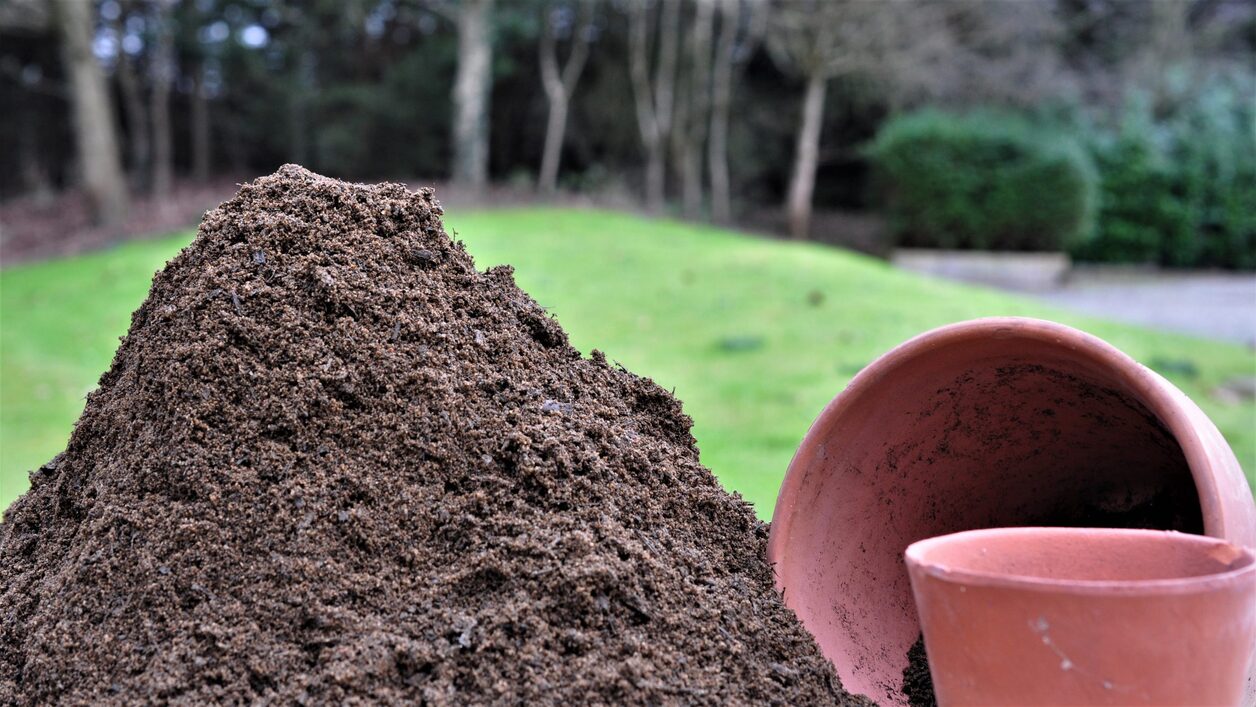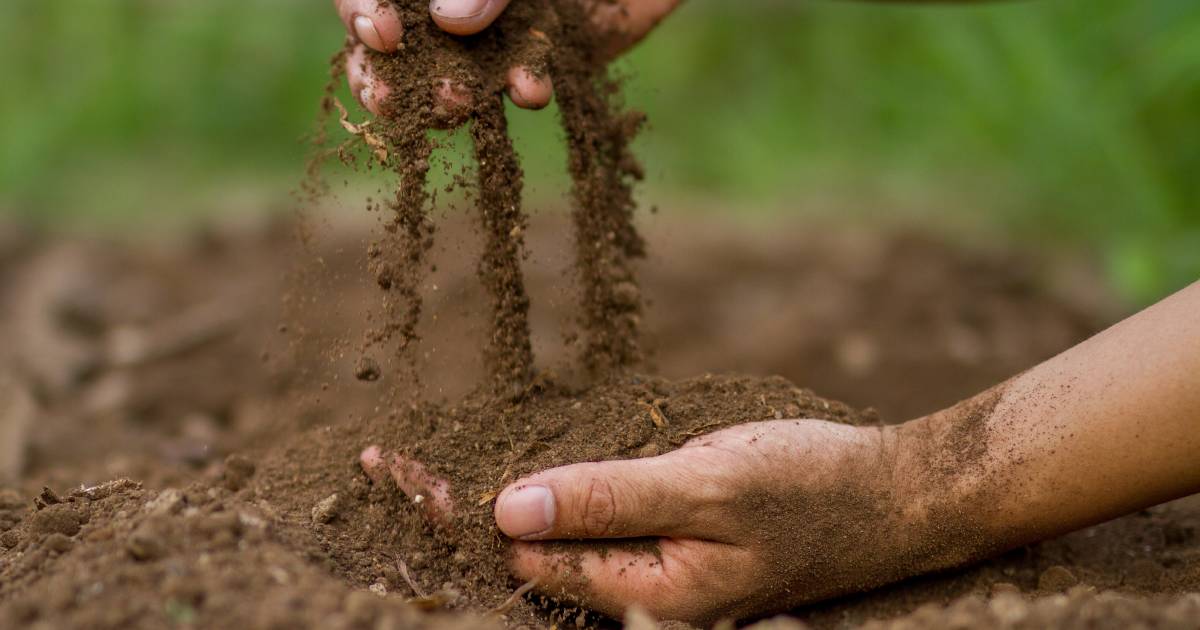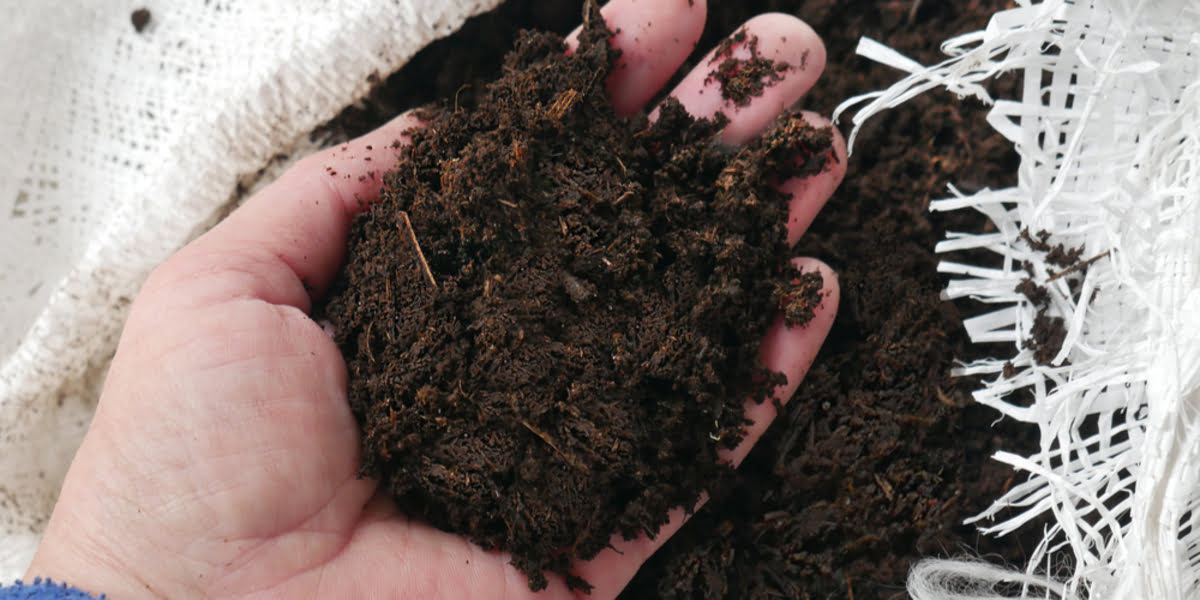Home>Gardening Basics>Understanding Soil>Why Is Topsoil Erosion A Problem
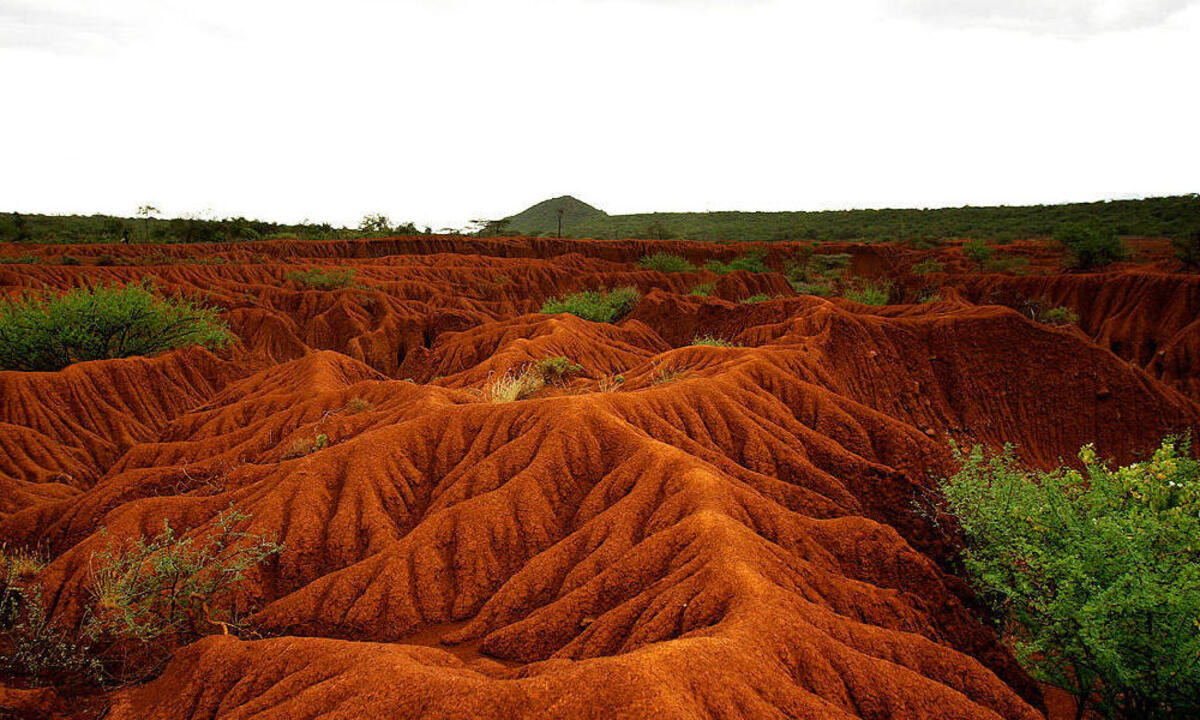

Understanding Soil
Why Is Topsoil Erosion A Problem
Modified: February 5, 2024
Understanding soil and topsoil erosion is crucial for addressing environmental concerns. Learn about the impacts and solutions for this pressing issue.
(Many of the links in this article redirect to a specific reviewed product. Your purchase of these products through affiliate links helps to generate commission for Chicagolandgardening.com, at no extra cost. Learn more)
Table of Contents
Introduction
Soil is a precious and finite resource that supports life on Earth. It is the foundation upon which plants grow, providing essential nutrients and water. However, soil erosion has emerged as a significant problem in recent years, threatening our ability to sustainably produce food and support ecosystems. Topsoil erosion, in particular, poses a grave concern as it is the uppermost layer of soil that is richest in nutrients and organic matter.
Topsoil erosion occurs when the top layer of soil is removed or displaced by natural forces such as wind and water, or human activities like deforestation and improper land management practices. This process is accelerated by factors such as steep slopes, intense rainfall, and the lack of vegetation cover.
The long-term consequences of topsoil erosion are detrimental to both the environment and human society. It leads to the loss of fertile land, decreased agricultural productivity, and increased sedimentation in rivers and streams. Furthermore, the eroded soil carries pollutants and nutrients into water bodies, causing water pollution and compromising aquatic ecosystems.
The economic impacts of topsoil erosion are also significant. Agriculture, which heavily relies on healthy topsoil for crop growth, suffers from reduced yields and increased production costs. Additionally, the sedimentation of waterways can disrupt navigation channels, increase flooding risks, and damage infrastructure, requiring substantial investments in mitigation and restoration efforts.
Recognizing the urgency of addressing topsoil erosion, various strategies have been developed to mitigate and prevent further degradation. These include implementing conservation practices such as contour plowing, terracing, and the use of cover crops to protect the soil. Additionally, reforestation efforts, promoting sustainable land management practices, and raising awareness about the importance of soil conservation are essential in combating topsoil erosion.
It is crucial for governments, farmers, and individuals to understand the impacts of topsoil erosion and take proactive measures to protect our valuable soil resources. By adopting sustainable practices and implementing effective erosion control strategies, we can ensure the long-term health of our soils, preserve biodiversity, and sustainably meet the needs of future generations.
Definition of Topsoil Erosion
Topsoil erosion is the process by which the uppermost layer of soil, known as topsoil, is eroded or removed from the Earth’s surface. This layer, typically rich in organic matter, nutrients, and microorganisms, plays a vital role in supporting plant growth and sustaining agricultural productivity. However, various natural and human-induced factors contribute to the accelerated loss of topsoil, posing a significant threat to ecosystems and food production.
Erosion can occur through different mechanisms, primarily driven by wind and water. Wind erosion typically occurs in arid and semi-arid regions, where strong winds pick up loose soil particles and carry them away. Water erosion, on the other hand, is a more widespread and damaging process. It occurs when rainfall or irrigation water dislodges and transports soil particles downhill or across the land surface.
The severity of topsoil erosion depends on several factors. Slope steepness and length play a crucial role, as steeper slopes contribute to faster runoff and erosion rates. The intensity and duration of rainfall or irrigation also influence the erosive power of water, as excessive water can cause runoff and lead to soil erosion. Lack of vegetative cover, due to deforestation, overgrazing, or improper land management, exacerbates topsoil erosion by leaving the soil exposed to the elements.
Another key factor in topsoil erosion is soil composition and structure. Soils with high clay content tend to be more resistant to erosion, as clay particles bind together and create a more stable soil structure. Conversely, sandy or loose soils are more prone to erosion, as individual particles are easily detached and transported.
In agricultural settings, topsoil erosion can be further exacerbated by unsustainable farming practices. These include improper tillage methods, excessive use of synthetic fertilizers and pesticides, monocropping, and overirrigation. Such practices can degrade soil quality, diminish organic matter content, and lead to soil compaction, making the soil more susceptible to erosion.
Ultimately, topsoil erosion has profound implications for soil fertility, agricultural productivity, and the overall health of ecosystems. It is imperative to understand the causes and impacts of topsoil erosion to develop effective strategies for preventing and mitigating this ongoing environmental challenge.
Causes of Topsoil Erosion
Topsoil erosion is influenced by various natural and human-induced factors, which can act alone or in combination to accelerate the loss of this valuable resource. Understanding these causes is crucial for implementing effective erosion control measures and sustainable land management practices.
1. Water Erosion:
One of the primary causes of topsoil erosion is water. Heavy rainfall, particularly when it occurs on sloping land, can lead to the detachment and transport of soil particles. Runoff from impervious surfaces, such as paved roads and parking lots, can also contribute to water erosion. Poorly constructed or inadequately maintained drainage systems can exacerbate the problem.
2. Wind Erosion:
In arid and semi-arid regions, wind erosion plays a significant role in topsoil loss. Strong winds lift and carry away loose soil particles, causing soil erosion. Overgrazing, sparse vegetative cover, and improper land management practices can create conditions conducive to wind erosion.
3. Deforestation:
Clearing forests for agriculture, urban development, or logging purposes can remove the protective vegetative cover that helps prevent erosion. Trees and shrubs play a crucial role in anchoring the soil with their roots, reducing the erosive power of rainfall and wind. Without this cover, topsoil becomes more vulnerable to erosion.
4. Improper Land Management:
Unsustainable land management practices, such as excessive tillage, can degrade soil structure and increase the risk of erosion. Overgrazing by livestock can also compact the soil, reducing its ability to absorb water and increasing runoff. Inappropriate use of synthetic fertilizers and pesticides can further disrupt the natural balance of the soil ecosystem, affecting its stability and susceptibility to erosion.
5. Construction and Mining Activities:
Construction projects and mining activities can lead to significant amounts of topsoil loss. Excavation and grading can disturb the natural soil profile, leaving it exposed to erosion. Lack of proper erosion control measures at construction sites can result in sediment runoff into nearby water bodies.
6. Climate Change:
Climate change can exacerbate topsoil erosion through increased rainfall intensity, prolonged droughts, and changes in wind patterns. These altered weather patterns can contribute to more frequent and severe erosion events, putting more pressure on the stability of topsoil.
By addressing these underlying causes of topsoil erosion, implementing sustainable land management practices, and promoting responsible land use, we can minimize the loss of this valuable resource and ensure a healthier and more resilient environment.
Effects of Topsoil Erosion
Topsoil erosion can have far-reaching and detrimental effects on both natural ecosystems and human society. Understanding these effects is crucial for recognizing the urgency of addressing this environmental issue and implementing effective soil conservation measures.
1. Reduced Agricultural Productivity:
Topsoil erosion leads to the loss of the most fertile layer of soil, reducing its ability to support plant growth. As a result, agricultural productivity decreases, leading to lower crop yields and farmers experiencing financial losses. This depletion of fertile soil can hinder food production and jeopardize food security in affected regions.
2. Nutrient Depletion:
The topsoil layer is rich in nutrients that are essential for plant growth. When topsoil is eroded, these nutrients are lost, exacerbating soil degradation and making it more challenging for plants to thrive. This nutrient depletion can have cascading effects on the entire ecosystem, including reduced biodiversity and compromised ecosystem services.
3. Water Pollution:
Eroded soil can be carried by runoff into water bodies, leading to sedimentation. Sediment-laden water can negatively impact aquatic ecosystems by reducing the amount of light that reaches underwater plants, disrupting the oxygen balance, and smothering aquatic habitats. Additionally, eroded soil can carry fertilizers, pesticides, and other pollutants, which can contaminate water sources and harm aquatic organisms.
4. Increased Flooding and Erosion Potential:
Topsoil erosion decreases the soil’s ability to absorb and retain water, leading to increased runoff. This increased runoff can contribute to higher flood risks, as water accumulates in rivers and streams more rapidly. Furthermore, erosion of topsoil from sloping areas can lead to gullies and ravines, further exacerbating soil erosion and landscape degradation.
5. Loss of Soil Structure and Organic Matter:
Topsoil erosion can result in the loss of soil structure and organic matter, further affecting soil health and functionality. Soil structure provides pore spaces for water absorption and root penetration, while organic matter improves soil fertility and water-holding capacity. Without these components, soil quality deteriorates, leading to decreased soil productivity and increased vulnerability to erosion.
6. Impact on Climate Change Mitigation:
Healthy soils play a crucial role in carbon sequestration, helping to mitigate climate change by removing and storing carbon dioxide from the atmosphere. However, topsoil erosion disrupts this process, releasing stored carbon and reducing the soil’s capacity to absorb and store future carbon. This loss of soil carbon can contribute to increased greenhouse gas emissions and exacerbate climate change.
Understanding these effects highlights the need for immediate action to prevent further topsoil erosion. Implementing sustainable land management practices, promoting soil conservation, and addressing the underlying causes of erosion are essential steps toward mitigating the far-reaching impacts of topsoil erosion on our environment and society.
Environmental Impact
Topsoil erosion has significant environmental consequences, affecting various ecosystems and natural processes. It disrupts the delicate balance of the environment and threatens biodiversity, soil health, and ecosystem services.
1. Biodiversity Loss:
Erosion of topsoil can lead to the loss of important habitats and negatively impact biodiversity. Soil organisms, such as bacteria, fungi, and earthworms, play essential roles in nutrient cycling and soil health. When topsoil is eroded, these organisms lose their habitat, leading to a decline in biodiversity and impacting the overall functioning and resilience of ecosystems.
2. Habitat Degradation:
Topsoil erosion can alter or destroy habitats, especially in areas with fragile ecosystems. Loss of soil can directly impact plant species, as seeds may be unable to germinate or survive without the necessary soil structure and nutrients. This can lead to the displacement or extinction of plant species, disrupting the balance of the ecosystem and affecting the organisms that rely on these plants for food and shelter.
3. Soil Degradation:
Eroded topsoil not only depletes valuable nutrients but also reduces the soil’s overall organic matter content. Organic matter is crucial for soil fertility, water retention, and nutrient availability. Without this vital component, soil health deteriorates, leading to decreased microbial activity, reduced soil structure, and decreased ability to store and release water. This, in turn, impacts plant growth and the overall function of the ecosystem.
4. Water Quality Impairment:
Eroded topsoil can significantly impact water quality by introducing sediment and other pollutants into water bodies. Sedimentation can harm aquatic ecosystems by reducing light penetration, clogging fish gills, and smothering aquatic vegetation. Additionally, the eroded soil can carry agricultural chemicals, fertilizers, and pesticides, which can contaminate water sources and harm aquatic organisms.
5. Disruption of Nutrient Cycling:
Topsoil erosion disrupts the natural cycling of essential nutrients in ecosystems. The eroded topsoil takes away valuable organic matter and nutrients, preventing them from being recycled and utilized properly. This disruption can lead to imbalances in nutrient availability, affecting plant growth, and ultimately impacting the entire food chain and ecosystem dynamics.
6. Climate Change Feedback:
Erosion of topsoil can contribute to climate change by releasing stored carbon dioxide into the atmosphere. The eroded soil, which often contains organic matter, releases carbon when exposed to air or water. This process increases greenhouse gas emissions, exacerbating global climate change.
The environmental impacts of topsoil erosion highlight the urgency for implementing sustainable land management practices, conserving soil resources, and promoting biodiversity conservation. By addressing topsoil erosion, we can preserve ecosystems, protect biodiversity, and ensure the health and resilience of our natural environment.
Economic Impact
Topsoil erosion has significant economic repercussions, affecting various sectors and industries that rely on healthy soil for their livelihood. The financial implications of erosion extend to agriculture, infrastructure, and overall economic stability.
1. Reduced Agricultural Productivity:
Topsoil erosion directly affects agricultural productivity, as it removes the most fertile layer of soil that supports plant growth. With diminished soil fertility, crop yields decrease, resulting in financial losses for farmers. Lower agricultural productivity also leads to higher food prices, impacting both producers and consumers. This can have significant implications for food security, particularly in regions where agriculture is a primary source of income and sustenance.
2. Increased Production Costs:
Erosion-related challenges necessitate additional investments in soil conservation practices and erosion control measures. Farmers may need to adopt new techniques, such as contour plowing, terracing, or the use of cover crops, to prevent further erosion and maintain crop productivity. These practices often require financial resources, adding to production costs and potentially reducing profitability for farmers.
3. Infrastructure Damage:
Topsoil erosion can impact infrastructure, particularly in areas prone to sedimentation and runoff. Sediment-laden water can clog irrigation systems, reservoirs, and drainage networks, leading to reduced functionality and increased maintenance costs. Additionally, increased erosion can undermine the stability of roads, bridges, and buildings, necessitating costly repairs and infrastructure improvements.
4. Increased Water Treatment Costs:
Erosion-induced sedimentation can negatively impact water treatment facilities by clogging filters and increasing operational costs. Water contaminated with sediment and pollutants requires additional treatment processes to ensure its safety for consumption, leading to increased expenses for water treatment plants. These costs can be passed on to consumers through higher water bills.
5. Loss of Ecosystem Services:
Erosion undermines the natural services provided by healthy soil and intact ecosystems. These services include water purification, flood regulation, and carbon sequestration. The economic value of these services can be substantial, and the loss or degradation of such services due to erosion can have indirect economic impacts, such as increased costs for water purification or mitigation of flood damage.
6. Tourism and Recreation:
Erosion-induced landscape degradation can negatively impact scenic areas, tourist attractions, and recreational sites that rely on natural beauty to attract visitors. Reduced aesthetic value and loss of biodiversity can deter tourists, impacting local economies that rely on tourism revenue. Additionally, erosion-related challenges, such as soil instability and increased flooding risks, can limit recreational activities and infrastructure development.
The economic impact of topsoil erosion highlights the importance of implementing sustainable land management practices, promoting soil conservation, and investing in erosion control strategies. By mitigating erosion and preserving soil health, we can protect the economic stability of agricultural communities, minimize infrastructure damage, and ensure a sustainable and prosperous future.
Strategies for Preventing Topsoil Erosion
To combat topsoil erosion and protect the integrity of our soils, various strategies and practices have been developed. These strategies aim to minimize the factors that contribute to erosion and promote sustainable land management. By implementing these measures, we can mitigate the loss of topsoil and ensure the long-term health of our soils.
1. Conservation Tillage:
Conservation tillage practices, such as no-till or reduced tillage, minimize soil disturbance and help to maintain soil structure. By reducing or eliminating tillage operations, the protective cover of crop residues and plant roots is preserved, reducing erosion caused by wind and water runoff.
2. Contour Plowing and Terracing:
Contour plowing involves planting crops perpendicular to the slope, following the contours of the land. This technique helps slow down water runoff and encourages water infiltration, reducing erosion. Terracing, on the other hand, creates level or gently sloping platforms on hilly terrain, effectively reducing the length and intensity of slope runoff.
3. Cover Crops and Crop Rotation:
Planting cover crops, such as legumes or grasses, during periods when the main cash crop is not grown helps to protect the soil. Cover crops hold the soil in place, prevent erosion, improve soil structure, and enhance nutrient cycling. Crop rotation, alternating different crops on the same piece of land over time, also helps to break disease cycles and reduce soil erosion.
4. Windbreaks and Vegetative Buffer Strips:
Strategically planting trees or tall vegetation as windbreaks can help to slow down and divert wind, reducing wind erosion. Vegetative buffer strips, such as grass or native vegetation, are planted along water bodies or contour lines to slow down water runoff and trap sediment, preventing erosion and sedimentation of water bodies.
5. Soil Conservation Practices:
Implementing soil conservation practices, such as mulching, can help protect the soil from erosion. Applying organic mulch materials, such as straw or wood chips, can improve moisture retention, reduce raindrop impact, and enhance soil stability. These practices help to suppress weed growth and minimize the impact of heavy rainfall on soil erosion.
6. Proper Land and Water Management:
Proper land and water management practices, such as maintaining proper drainage systems and minimizing soil compaction, can help to prevent erosion. By reducing runoff and controlling the flow of water, these practices minimize the erosive power of water and protect the integrity of the soil.
7. Reforestation:
Reforesting barren or degraded areas can play a vital role in preventing erosion. Trees and their extensive root systems anchor the soil, reducing erosion caused by wind and water. Reforestation efforts can restore degraded landscapes, improve soil structure, and enhance biodiversity.
8. Education and Outreach:
Raising awareness about the importance of soil conservation and providing education on sustainable land management practices is paramount. By promoting understanding and knowledge, individuals, farmers, and communities can make informed decisions and take proactive steps to prevent erosion in their respective areas.
By implementing these strategies and practices, we can effectively prevent topsoil erosion, protect our soils, and ensure the long-term sustainability of our land resources. It is crucial for governments, farmers, and individuals to collaborate and prioritize the adoption of these measures to mitigate the adverse effects of erosion and secure a healthy environment for future generations.
Conclusion
Topsoil erosion is a pressing environmental issue that poses significant challenges to our ecosystems, agricultural productivity, and economic stability. The loss of valuable topsoil through natural processes and human activities threatens soil fertility, disrupts nutrient cycles, and compromises the health of our soils.
The consequences of topsoil erosion are far-reaching. From reduced agricultural productivity and water pollution to increased flood risks and habitat degradation, the impacts are both ecologically and economically significant. Recognizing the urgency of addressing this issue, various strategies and practices have been developed to prevent and mitigate topsoil erosion.
Conservation measures such as conservation tillage, contour plowing, and cover cropping help to protect the soil from wind and water erosion. Proper land and water management, reforestation efforts, and promoting sustainable farming practices are also essential in preserving the health of our soils.
Addressing topsoil erosion requires collaborative efforts from governments, farmers, researchers, and individuals. Education and outreach play a vital role in increasing awareness about the importance of soil conservation and encouraging the adoption of sustainable land management practices. By working together, we can protect our valuable soil resources, enhance agricultural productivity, and safeguard the health of our ecosystems.
It is imperative that we take decisive action to prevent further topsoil erosion. By implementing these strategies, we can preserve soil fertility, maintain biodiversity, mitigate climate change, and ensure long-term food security. Protecting our soils is not only essential for our present well-being but also for the well-being of future generations.
